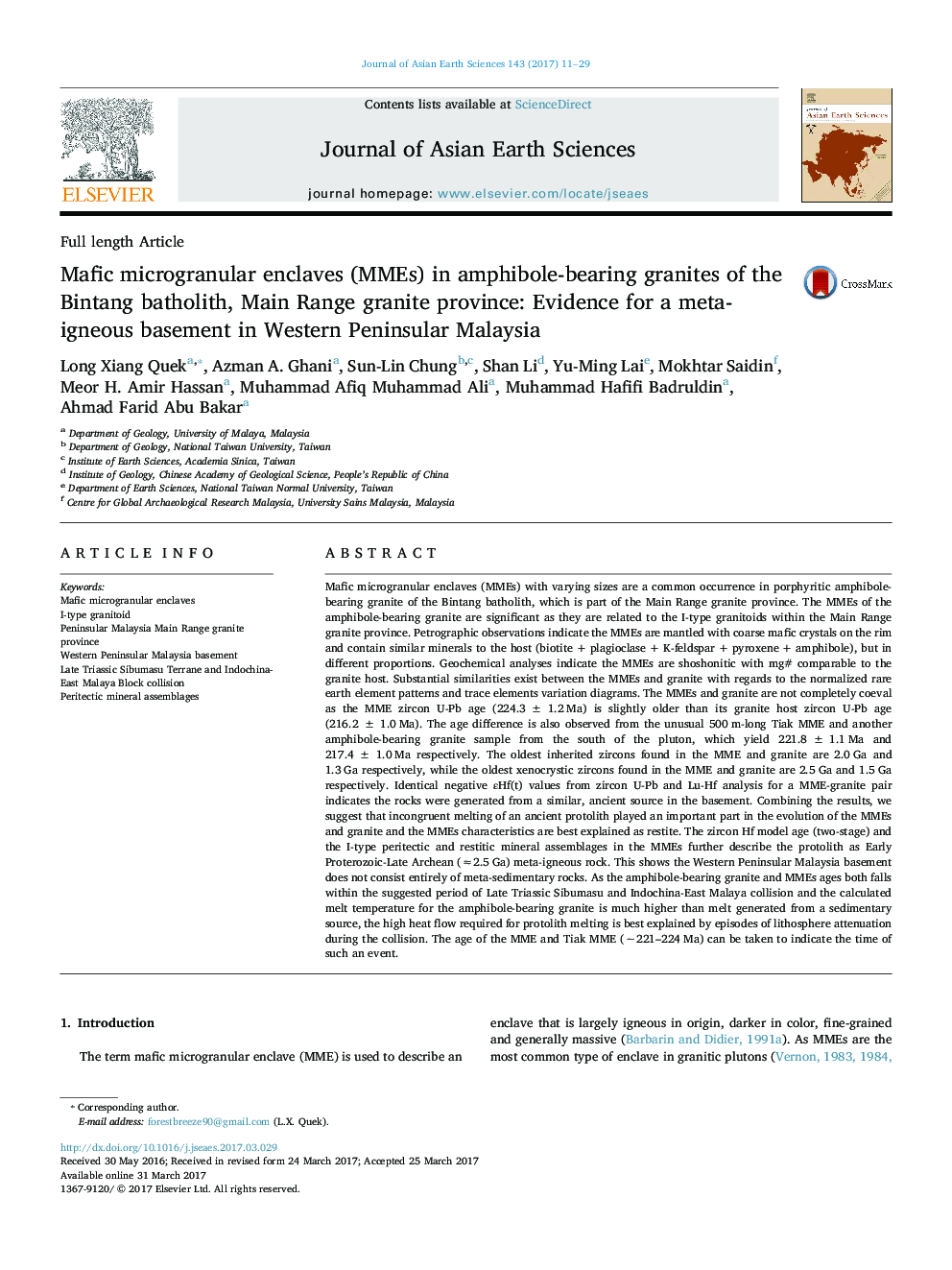| کد مقاله | کد نشریه | سال انتشار | مقاله انگلیسی | نسخه تمام متن |
|---|---|---|---|---|
| 5785996 | 1640329 | 2017 | 19 صفحه PDF | دانلود رایگان |

- Through the study of the MMEs, the granitoid meta-igneous origin is determined.
- The MMEs as evidence for a meta-igneous protolith within the basement.
- Attenuated lithosphere episodes during the Sibumasu-Indochina collision.
Mafic microgranular enclaves (MMEs) with varying sizes are a common occurrence in porphyritic amphibole-bearing granite of the Bintang batholith, which is part of the Main Range granite province. The MMEs of the amphibole-bearing granite are significant as they are related to the I-type granitoids within the Main Range granite province. Petrographic observations indicate the MMEs are mantled with coarse mafic crystals on the rim and contain similar minerals to the host (biotite + plagioclase + K-feldspar + pyroxene + amphibole), but in different proportions. Geochemical analyses indicate the MMEs are shoshonitic with mg# comparable to the granite host. Substantial similarities exist between the MMEs and granite with regards to the normalized rare earth element patterns and trace elements variation diagrams. The MMEs and granite are not completely coeval as the MME zircon U-Pb age (224.3 ± 1.2 Ma) is slightly older than its granite host zircon U-Pb age (216.2 ± 1.0 Ma). The age difference is also observed from the unusual 500 m-long Tiak MME and another amphibole-bearing granite sample from the south of the pluton, which yield 221.8 ± 1.1 Ma and 217.4 ± 1.0 Ma respectively. The oldest inherited zircons found in the MME and granite are 2.0 Ga and 1.3 Ga respectively, while the oldest xenocrystic zircons found in the MME and granite are 2.5 Ga and 1.5 Ga respectively. Identical negative εHf(t) values from zircon U-Pb and Lu-Hf analysis for a MME-granite pair indicates the rocks were generated from a similar, ancient source in the basement. Combining the results, we suggest that incongruent melting of an ancient protolith played an important part in the evolution of the MMEs and granite and the MMEs characteristics are best explained as restite. The zircon Hf model age (two-stage) and the I-type peritectic and restitic mineral assemblages in the MMEs further describe the protolith as Early Proterozoic-Late Archean (â2.5 Ga) meta-igneous rock. This shows the Western Peninsular Malaysia basement does not consist entirely of meta-sedimentary rocks. As the amphibole-bearing granite and MMEs ages both falls within the suggested period of Late Triassic Sibumasu and Indochina-East Malaya collision and the calculated melt temperature for the amphibole-bearing granite is much higher than melt generated from a sedimentary source, the high heat flow required for protolith melting is best explained by episodes of lithosphere attenuation during the collision. The age of the MME and Tiak MME (â¼221-224 Ma) can be taken to indicate the time of such an event.
110
Journal: Journal of Asian Earth Sciences - Volume 143, 1 August 2017, Pages 11-29